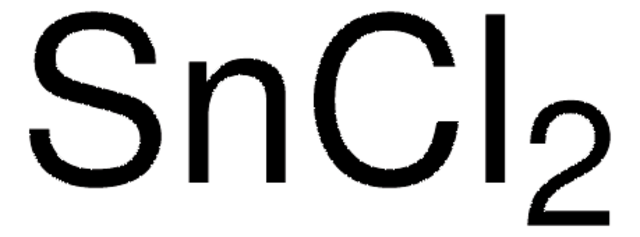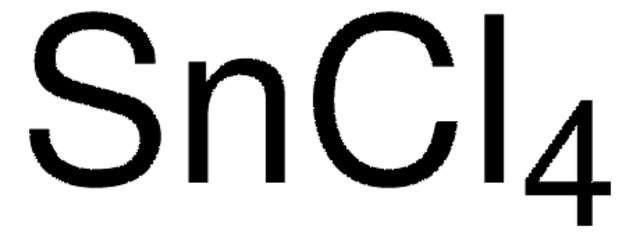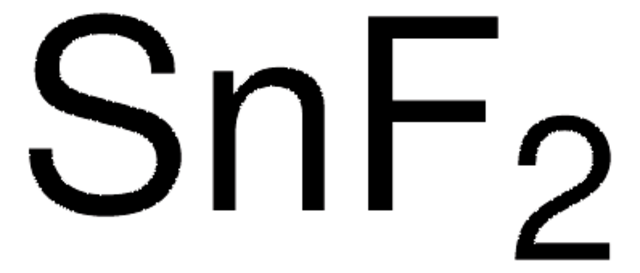452335
Tin(II) chloride
anhydrous, powder, ≥99.99% trace metals basis
Synonyme(s) :
Stannous chloride
About This Item
Produits recommandés
Qualité
anhydrous
Niveau de qualité
Pression de vapeur
33 hPa (~429 °C)
Essai
≥99.99% trace metals basis
Forme
powder
Pertinence de la réaction
reagent type: catalyst
core: tin
pH
2.18 (20 °C)
pb
606 °C
652 °C (lit.)
Pf
246 °C (lit.)
Solubilité
water: soluble 1780 g/L at 10 °C
Chaîne SMILES
Cl[SnH2]Cl
InChI
1S/2ClH.Sn/h2*1H;/q;;+2/p-2
Clé InChI
AXZWODMDQAVCJE-UHFFFAOYSA-L
Vous recherchez des produits similaires ? Visite Guide de comparaison des produits
Description générale
Application
À utiliser avec
Mention d'avertissement
Danger
Mentions de danger
Classification des risques
Acute Tox. 4 Inhalation - Acute Tox. 4 Oral - Aquatic Chronic 3 - Eye Dam. 1 - Met. Corr. 1 - Skin Corr. 1B - Skin Sens. 1 - STOT RE 2 Oral - STOT SE 3
Organes cibles
Cardio-vascular system, Respiratory system
Code de la classe de stockage
8B - Non-combustible corrosive hazardous materials
Classe de danger pour l'eau (WGK)
WGK 3
Point d'éclair (°F)
Not applicable
Point d'éclair (°C)
Not applicable
Équipement de protection individuelle
Eyeshields, Faceshields, Gloves, type P3 (EN 143) respirator cartridges
Faites votre choix parmi les versions les plus récentes :
Déjà en possession de ce produit ?
Retrouvez la documentation relative aux produits que vous avez récemment achetés dans la Bibliothèque de documents.
Les clients ont également consulté
Articles
Silylethyne-Substituted Pentacenes
Silylethyne-Substituted Pentacenes
Notre équipe de scientifiques dispose d'une expérience dans tous les secteurs de la recherche, notamment en sciences de la vie, science des matériaux, synthèse chimique, chromatographie, analyse et dans de nombreux autres domaines..
Contacter notre Service technique







